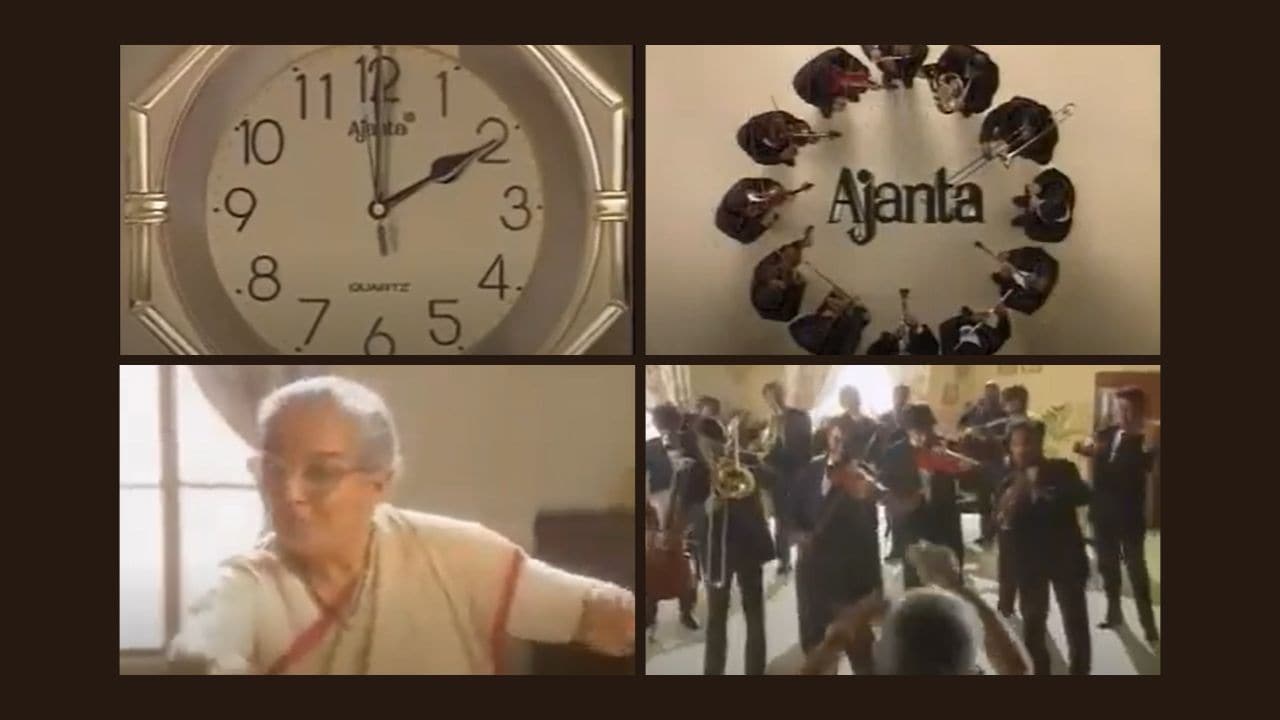Prathap Suthan was a Senior Copywriter at Mudra Communications (now DDB Mudra), Ahmedabad. The day the iconic Ajanta Clocks ad film was to be released was the most important one for him. But as luck would have it, he didn’t have a TV at home. So he went to his landlord’s place to catch it.
The TVC surpassed expectations, and as Suthan put it, “created history.’’ This was in the late 1980s.
Genesis of the campaign
One day, Suthan’s branch manager told him that he had to meet a client who was waiting in the conference room.
Suthan was accompanied by Vijay Nagrare, who was the Head of Servicing. Nagrare said that the client was from Morbi (known as the ceramics capital of India), a city in Gujarat, and ran a company called Ajanta Clocks.
These clocks had a total of 12 in-built tunes, across models, that would chime every hour. But the market didn’t take to the clocks as they found the feature irritating. As a result, the company was stuck with thousands of unsold clocks and was staring at serious losses.
Their top priority was clearing the stock, and knowing the power of marketing, they reached out to their agency.
Around that time, an aspiring young artist called Reynold Philips, who was then working as a medical representative at Tablets (India), approached Suthan for a job. He showed Suthan some pictures and certificates he was carrying, and the young copywriter told him about the ad film he was working on and the need for a storyboard.
Making of the campaign
While brainstorming, Suthan came up with the idea of a pregnant woman knitting in a rocking chair. When the clock strikes a particular hour, and the track begins to play, she falls in love with the music and turns into an orchestra conductor, wielding the knitting needle as her baton. She imagines that the musicians form a circle around her as she conducts. When the music ends, life goes back to normal.
Suthan explained the idea to Philips, and told him to make a storyboard for it. Suthan asked Philips to draw in frames with colour pencils, and put them together in a piano fold.
“When he came back after two days, he had made the most beautiful storyboard I had ever seen in life. He had even captured the expressions on the faces of people,” said Suthan. He pushed the agency’s management to hire Philips as a storyboard artist, and he was brought on board for a salary of Rs 2,000.
The clients also liked the idea and the storyboard, and Ram Madhvani of Equinox Films was roped in to produce it.
Madhvani liked the script, but suggested one change. In a conversation with Storyboard18, Madhvani remembered that he told Suthan to change the pregnant lady to a grandmother. The film director further added to this. The tolerance of younger people is higher as compared to older people, who are likely to get affected by the sound. Plus, the younger people would be out for work.
Suthan agreed to the change, and the client also gave their go-ahead. The music producer was Louis Banks brought in to do his thing, as anything beyond the 12 in-built musical tracks could not be used.
Sitting in the studio, Banks asked Suthan which track he had to work on. They decided on the ‘cuckoo waltz’ track.
Even though it was an unknown brand in 1990, the commercial, whose target audience was the middle class, won two awards, one of which was for the best commercial of the year at Commercial Artists Guild (CAG).
As Suthan said, “Ajanta Clocks went on to become the world’s biggest manufacturers of clocks on the back of that which enjoyed a run for 20 years.”
Read More: Remember Hari Sadu? Will that ad still work?
